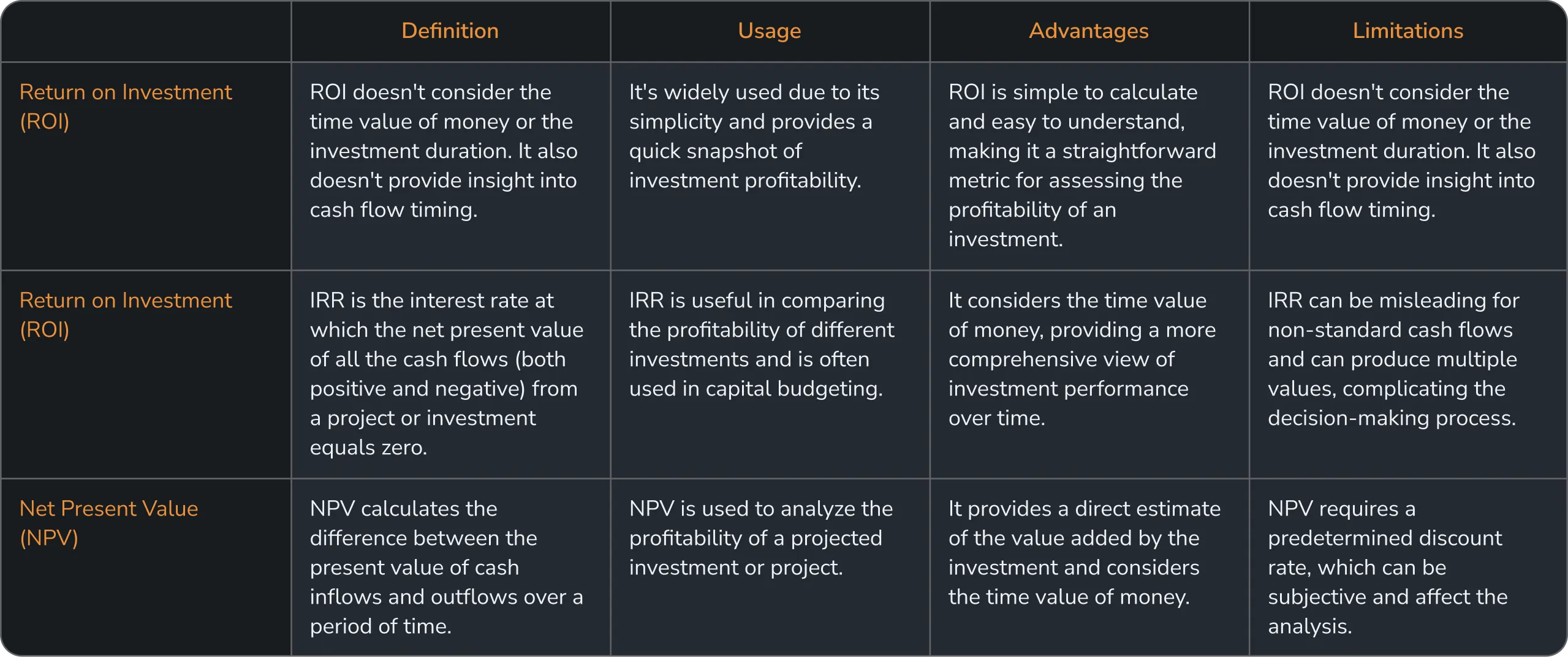Investing is vital for building wealth, combating inflation, and preserving the purchasing power of your savings. It is the key to achieving long-term financial goals like retirement, education funding, or owning a home. Moreover, investments drive economic development by fostering innovation and creating job opportunities. Understanding the importance of investing is the first step towards a secure financial future.
This guide is designed to help you understand and calculate Return on Investment (ROI), a critical measure in assessing the performance of various investment opportunities
Decoding Return on Investment (ROI):
ROI is an intuitive and versatile tool that measures the gain or loss of an investment relative to its cost. It is essential for comparing the efficiency of different investments. Whether you are investing in stocks, bonds, real estate, or a new business venture, understanding how to calculate return on investment is crucial in making informed decisions.
Visualizing Calculating ROI:
To calculate ROI, the benefit (or return) of an investment is divided by the cost of the investment. The result is expressed as a percentage or a ratio. The ROI formula is:

Example: If you invest $1,000 in a stock and its value increases to $1,200 after a year, the ROI would be:
- Initial Investment: $1,000
- Current Investment Value: $1,200
- Net Return: Currentl Investment Value - Initial Investment = $1,200 - $1,000 = $200
- ROI: $200$1000 100%= 20%
Comparative Analysis with Other Metrics: ROI vs. IRR vs. NPV
Understanding different financial metrics is crucial for comprehensive investment performance evaluation. Here's a comparison between Return on Investment (ROI), Internal Rate of Return (IRR), and Net Present Value (NPV):

Comparative Overview:
- Simplicity: ROI > IRR > NPV. ROI is the simplest, while NPV is the most complex.
- Time Value of Money: NPV and IRR consider it; ROI does not.
- Cash Flow Timing: Both NPV and IRR provide insights into the timing of returns, unlike ROI.
- Project Comparison: IRR and NPV are more effective for comparing different projects or investments, especially when they vary in size, duration, and timing of returns.
In summary, while ROI is easy to calculate, IRR and NPV offer a more nuanced view by considering the time value of money and cash flow timing. The choice of metric should depend on the investment context and the specific information needed for decision-making. Understanding and accurately calculating Return on Investment (ROI) is essential for financial literacy and success in your investment journey. Mastering ROI is key to making informed decisions and building a strong financial portfolio, whether you're starting or refining your strategies. However, navigating investment complexities often requires expert advice. Consulting with financial advisors like Investbanq is crucial to tailor investment decisions to your specific financial needs and goals, ensuring alignment with your personal risk tolerance and objectives.
